belgium
Belle (André Delvaux, 1973)
Nov
28

Belle (Adriana Bogdan) in front of her cabin on the moors. DPs: Ghislain Cloquet & Charles Van Damme.
Calle Santa Fe (Carmen Castillo, 2007)
Oct
5
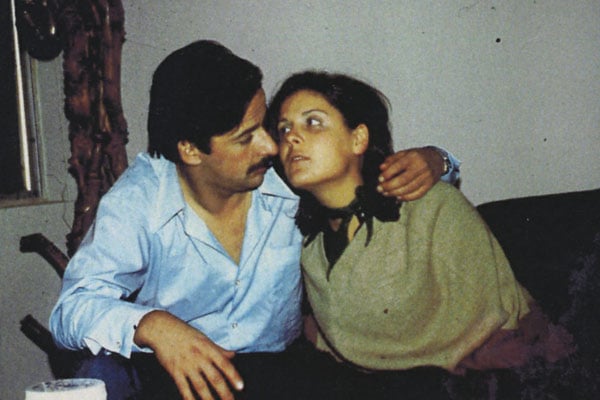
Miguel Enriquez holding Carmen Castillo in a family snapshot. DPs: Ned Burgess, Sebastián Moreno, Raphaël O'Byrne & Arnaldo Rodríguez.
“Tot dusver had ik mij steeds vrij tevreden met het leven gevoeld, zonder er wonderen van te verwachten. Die morgen geloofde ik, dat het voor een mens niet onmogelijk is gelukkig te zijn, kortstondig gelukkig misschien, maar gelukkig onmiskenbaar.”De komst van Joachim Stiller [The Arrival of Joachim Stiller] (Harry Kümel, 1976)
Sep
11
1919

The mysterious letter postmarked September 11, 1919 that one day landed on Freek Groenevelt's (Hugo Metsers) doormat. DP: Eduard van der Enden.
– Hubert Lampo, De komst van Joachim Stiller (1960)
Le 15/8 (Chantal Akerman + Samy Szlingerbaum, 1975)
Aug
15
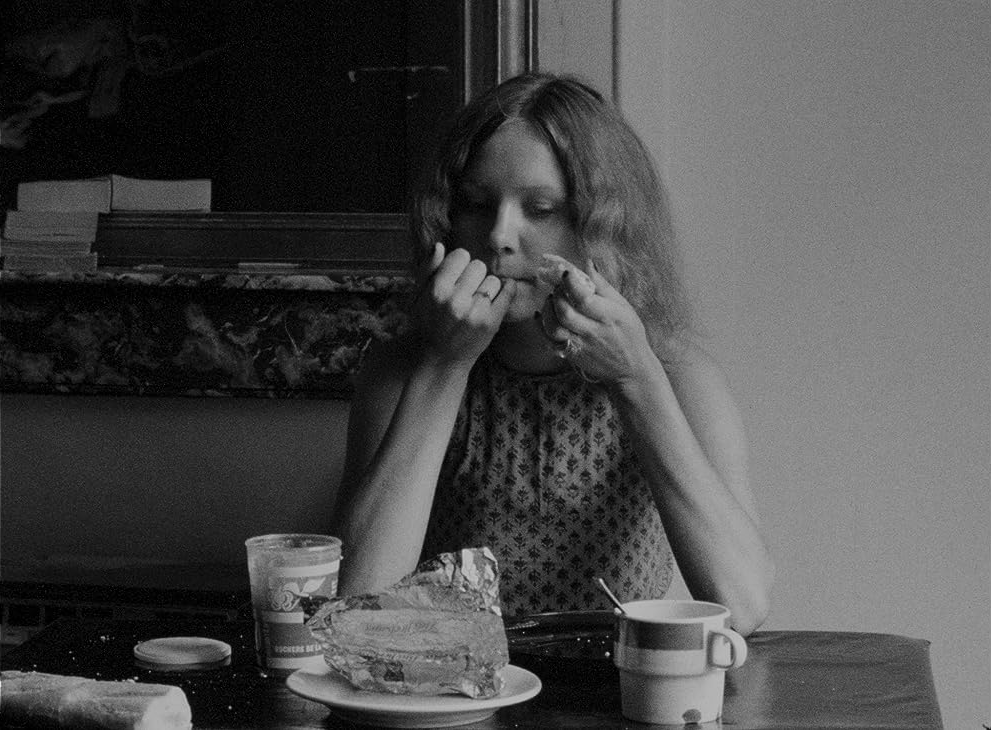
Chris Myllykoski. DPs: Chantal Akerman & Samy Szlingerbaum.
“Tell me the truth!” Ovoce stromů rajských jíme [We Eat the Fruit of the Trees of Paradise] (Věra Chytilová, 1970)
Aug
6
orange
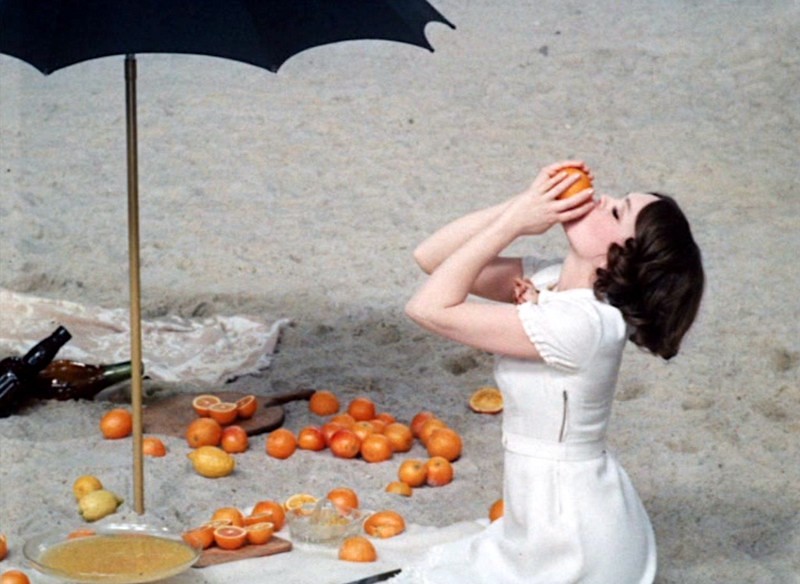
Eva (Jitka Novákova) devouring oranges under a black umbrella (via). DP: Jaroslav Kučera.
Orange, food or fashion*
– choir
An allegorical, psychedelic retelling of Genesis 3 and the Fall of Man
* the Bales 2025 Film Challenge for August is not date-related but lists, for the most part, the colours of the rainbow.
“But this art of total synthesis that is Cinema, this fabulous newborn of Machine and Sentiment, is beginning to cease its moans and is entering its infancy. Its adolescence will soon arrive, seize its intelligence, and multiply its dreams; we ask that we hasten its development, precipitate the advent of its youth. We need Cinema to create the total art toward which the other arts have always tended.“Combat de boxe (Charles Dekeukeleire, 1927)
Jun
30
Mike Tyson – 1966
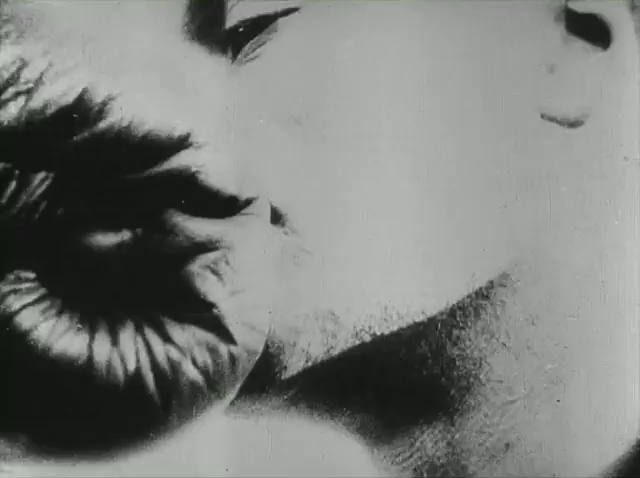
One of the fighters receives a direct hit. The camera is so close that we see abstract shapes, texture and contrast before recognising the scene. DP: Antoine Castille.
A [favourite] athlete in a film role for Mike Tyson's birthday
– Ricciotto Canudo, Gazette des sept arts, 1923 (via)
The match you see is real, between two actual fighters. Paul Werrie's rhythmic poem served as the basis. Everything else is illusion made flesh with what was available. An empty painter's studio, a few friends, footage of a crowd, a deep comprehension of the Kuleshov effect and rapid Soviet-style editing. Dekeukeleire places us from the safe world of the spectator right in the line of fire. But there's no release like in James Williamson's The Big Swallow (1901). Without that gimmick, cinema enters Canudo's realm, as the seventh art.
“Dear child,
l received your letter and hope you will write often. l hope you won’t stay away too long and that you’ve found a job by now. If you’re doing well, we’re happy. Even though we do miss you. When will you be back? Everything is fine here, but Sylviane is home with the flu. My blood pressure is low. l’m on medication for it. Today is my birthday. l feel sad. lt’s quiet at the shop. Tonight we’re going out to dinner with friends. That’s all. Your birthday is coming up. l wish you all the best. Write to me soon about your work, about New York, about everything. Lots of love from the three of us.News from Home (Chantal Akerman, 1976)
Apr
3
Pony Express Day

New York, a street scene. Superimposed a quote from one Chantal Akerman's mother's letters. DPs: Jim Asbell & Babette Mangolte.
Mail or a mail carrier for Pony Express Day (USA).
Your loving mother” (quote via)
Chantal Akerman reads out letters that her mother wrote to the former's stay in New York City between 1971 and 1973. The words slowly blend with the city.
Un soir, un train [One Night, a Train] (André Delvaux, 1968)
Mar
18
André Delvaux
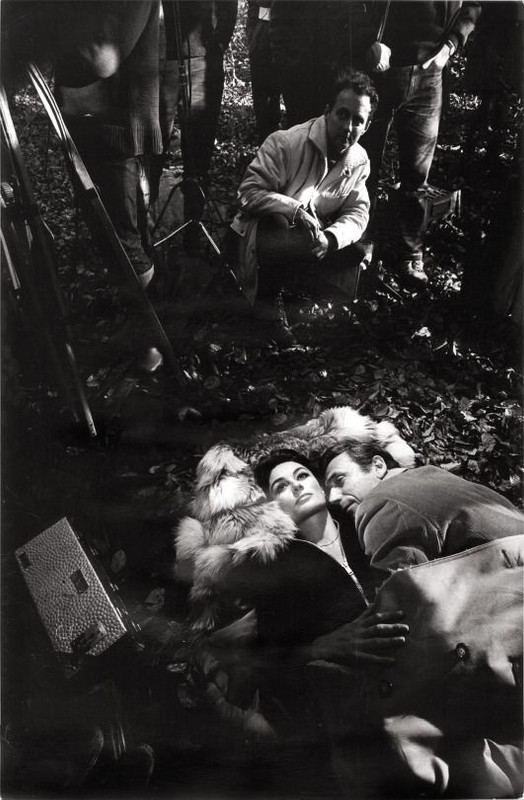
Anouk Aimée and Yves Montand in character on a leaf-strewn floor, his head resting on her chest, with director André Delvaux and others surrounding them. DP: Ghislain Cloquet.
A favourite film, director, or producer for Luc Besson's birthday (1959).
Having only seen three of Delvaux's films, I feel I can safely say his work is hypnotic, but not in the common sense. We see a world through both Delvaux's and his protagonists eyes, and experience their duality as one. This displacement is a recurring theme in Delvaux's work, the work of a man raised in one world and speaking the language of another, both worlds bearing the same name, Belgium.
This slow tear is also the theme is his best known film, De man die zijn haar kort liet knippen [The Man Who Had His Hair Cut Short] (1965), in which a schoolteacher loses himself after a pupil graduates. When we think we are firmly seated in Delvaux's universe, we fall back, like that moment just before sleep sets in. And again, in his tragically under-seen Belle from 1973. Now it's a poet who finds a woman living in a ramshackle hut in Belgium's peatland, her language an unknown. With only one main speaker, the duality forms in the poet's words, in his attempts to give her root.
And so do we, the viewers. We hang on to that root, Delvaux's, only to sink back into our own loss of words.
“With these shots from the back and the neck, we hope to confront the spectator with a mystery, the impossibility of knowing and seeing. The face and the eyes should not try to express a situation that already sufficiently stirs up the spectator’s interests. This expression would direct, limit or even prevent expectations, whereas the back and the neck allow the spectator to go deeper, like a car driving into the night.”Le fils [The Son] (Jean-Pierre Dardenne + Luc Dardenne, 2002)
Mar
15
Idus Martiae
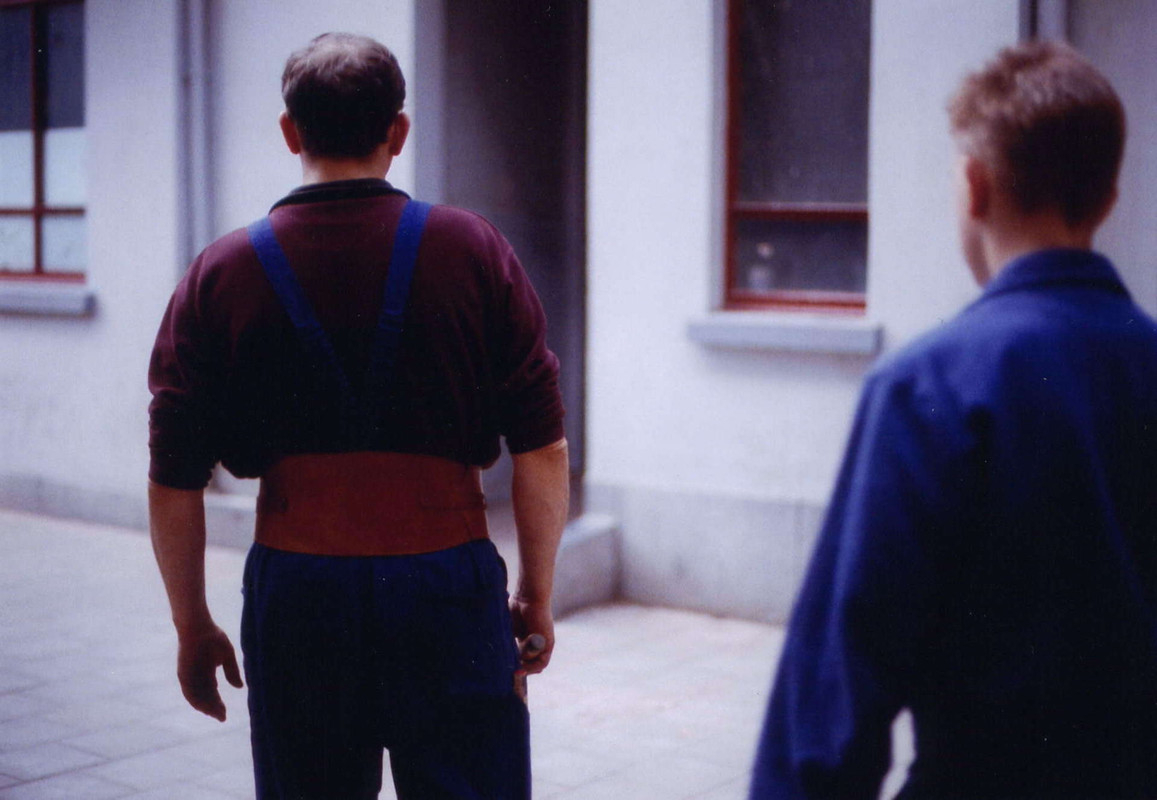
Olivier (Olivier Gourmet) and Francis (Morgan Marinne) both seen from the back, with the pupil following the teacher. DP: Alain Marcoen.
For Idus Martiae, the Ides of March, a scene showing the main character's back.
Olivier, a carpentry teacher at a youth rehabilitation center, has a new apprentice, 16 year old Francis. Fascinated by the boy and his unspoken backstory, he starts following him around.
– Luc Dardenne, via [spoilers]
“The Dardennes' brothers’ camera follows Olivier in his enigmatic, ominous obsession with the boy and almost constantly films him up close and from behind. In the absence of a true gaze, the back turns into a face that speaks but doesn’t explain anything, “a body that becomes a vibrating membrane”, as Jean-Pierre Dardenne so beautifully put it.” (via)
.jpg)